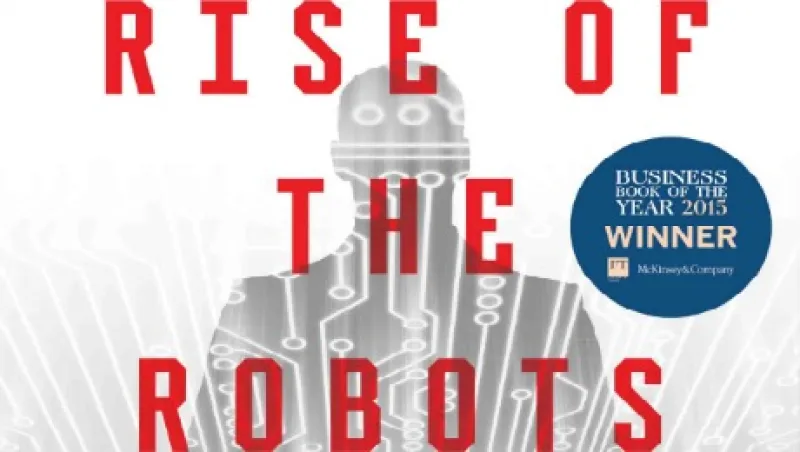The idea that robots are going to take all of our jobs is familiar to readers of science fiction. For a sizable chunk of workers, however, it’s not fiction; it’s a reality. As Silicon Valley entrepreneur Martin Ford points out in his latest book, The Rise of the Robots: Technology and the Threat of a Jobless Future, automation long ago displaced agricultural workers, who today account for less than 2 percent of the U.S. labor force, down from 50 percent in 1900. Factory workers similarly have been supplanted by machines over the past half century. Now, Ford writes, knowledge workers with the whitest of collars face the looming threat of automation.
Whereas Ford marshals impressive arrays of evidence for his thesis, he generally stops short of declaring that a robot-run economy is a certainty. Rather, he intimates that the preponderance of evidence suggests that he’s right. This approach helps to keep the material feeling more like information and less like speculation. Ford cites scholarly studies that show something like half of those holding U.S. jobs may be subject to automation within a couple of decades. These include highly educated people such as radiologists, as well as less-skilled workers like fast-food employees, who may see their work partly or entirely performed by machines in the not too distant future.
The financial sector is not only unlikely to escape, but it is also actually previewing the probable fate of many knowledge workers. Ford writes that the increasing reliance on automated trading platforms instead of human traders has contributed to the decline in Wall Street employment, from nearly 150,000 in 2000 to some 100,000 in 2013. Other professions, including journalism and software design, as well as teaching and even construction, are likely to face similar fates, he argues.
Although Ford’s evidence is heavily laden with numbers, he can also tell a good story. His description of how IBM Corp. came to create a computer named Watson that beat Jeopardy! champions at their own game is worth reading for the entertainment value alone. When he goes on to tell how the advances in artificial intelligence and other technologies resulting from that initiative may lead to eventual replacement of everyone from customer service reps to medical doctors, though, the entertainment winds down.
Interwoven throughout Ford’s work is the conflict between the people who control capital — and therefore technology and automation — and those who possess only their labor. He repeatedly paints a picture of a small and ever-richer upper class benefiting from the rise of the robots, while the working class stares down poverty.
Ford ends this bleak portrayal on a somewhat hopeful note: People may not have to work because owners of machines will be so rich that they can, essentially, support everyone else. He has a number of proposals for how this might be brought about. None include better vocational training or more education for the masses, because when the machines really start ramping up their skills, few if any humans will be able to keep pace, Ford writes.
One of his more radical suggestions is to consider a universal guaranteed minimum income. Although this seems like an extraordinarily divisive idea, Ford maintains that a guaranteed minimum income appeals to liberals and conservatives as well as businesses and social advocates. It would help keep people out of poverty while providing them with income to purchase all the goods and services robot-staffed businesses will be churning out.
Whether or not the reader finds Ford well reasoned or excessively alarmist, there seems little doubt that something odd is going on with jobs. And that’s not just evidenced by the slow pace of hiring since the 2008–’09 financial crisis. In one telling section, Ford cites U.S. Department of Labor data showing that wages for the average U.S. worker peaked in 1973 and have generally been on a slow decline since, whereas over the same period productivity has more than doubled. Those numbers make an inexorable argument that, bit by bit, human tasks continue to go the way of the robot.
Get more on macro.






